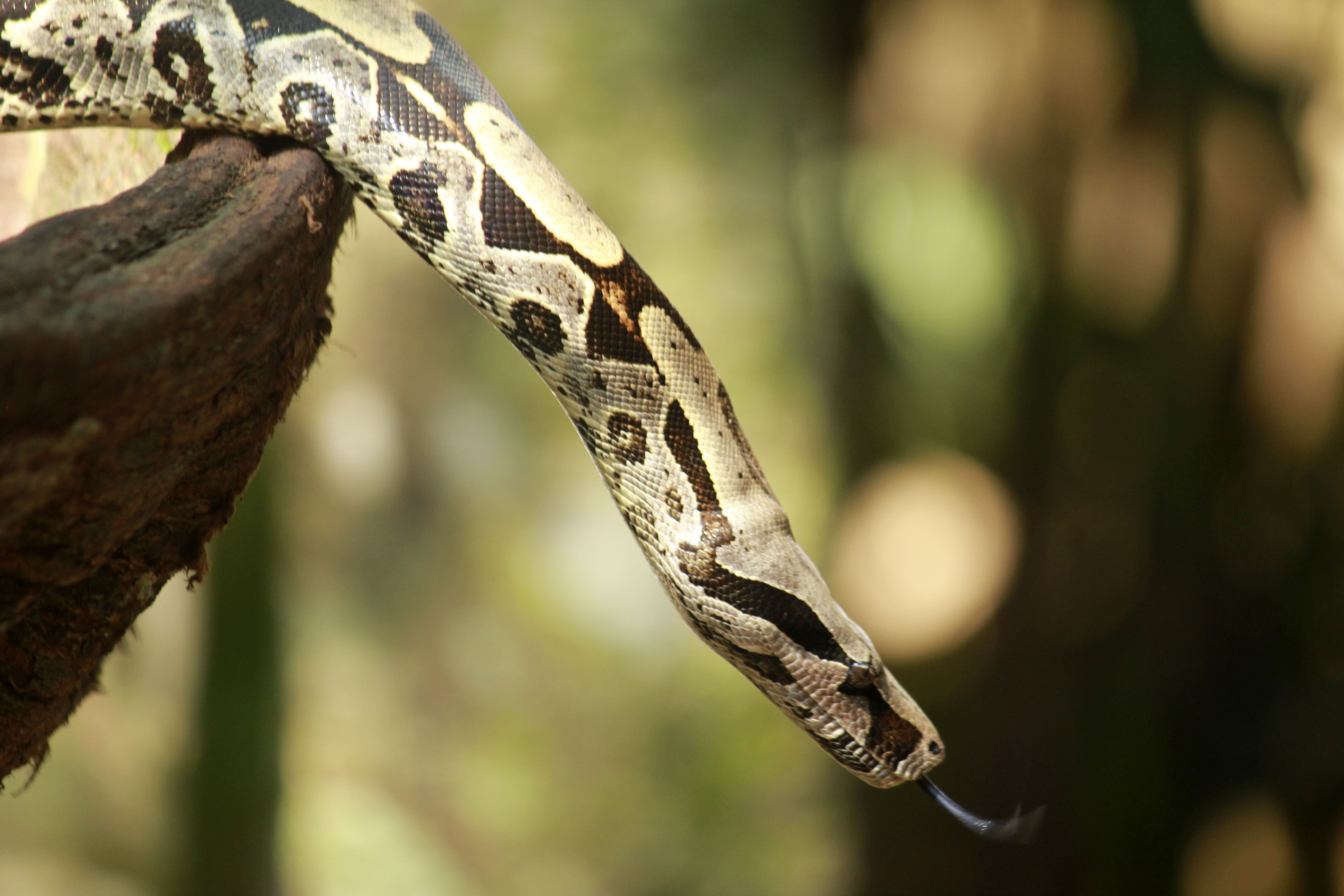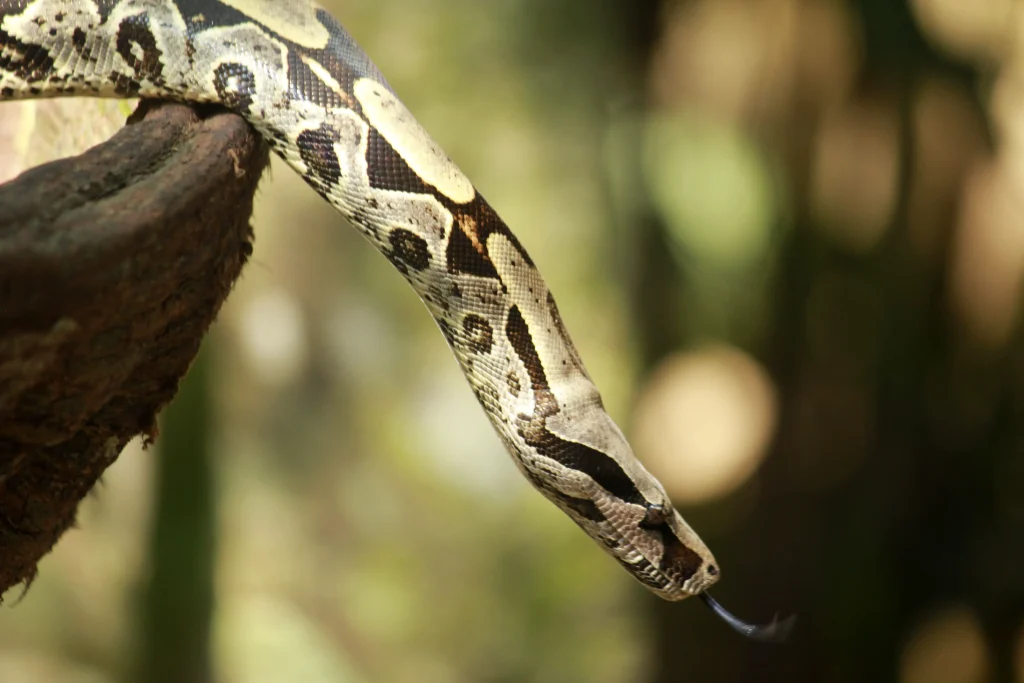Boa constrictors are fascinating creatures that make for unique and rewarding pets. However, they require careful attention and specific care to ensure their health and well-being. If you’re considering bringing a boa into your home, this guide will provide you with the knowledge and resources needed to become a responsible and successful boa owner. From setting up their enclosure to feeding and handling, we’ll cover everything you need to know to give your boa constrictor the best possible care. So, let’s dive in!
Boa constrictors make great pets, but they require special care. Make sure your boa has a spacious enclosure with a basking area and a hiding spot. Boas need a consistent temperature and humidity level, and they should be fed appropriately-sized prey once a week. Handle your boa regularly to keep them tame and healthy. Always do your research and consult with a veterinarian before bringing a boa constrictor into your home.

A Guide to Caring for Boa Constrictors as Pets
Boa constrictors are fascinating and beautiful creatures that make great pets for those who are willing to commit to their care. These snakes can grow up to 10 feet long and live for over 20 years, so it’s important to understand their unique needs and provide them with the proper care they require. In this guide, we will cover everything you need to know about caring for boa constrictors as pets.
1. Housing
Boa constrictors require a spacious enclosure that allows them to move around freely. A 40-gallon tank is a good starting point for a young boa, but as they grow, they will need a larger enclosure. A good rule of thumb is to provide an enclosure that is at least as long as the snake is, and twice as wide as the snake at its widest point.
A heat lamp or under-tank heating pad should be used to maintain a temperature gradient within the enclosure. The warm end of the enclosure should be kept between 85-90°F, while the cool end should be around 75-80°F. A hide box should also be provided at both the warm and cool ends to give the snake a place to retreat and feel secure.
2. Feeding
Boa constrictors are carnivorous and will eat rodents in captivity. Young boas should be fed once a week, while adults can be fed every two weeks. Frozen-thawed rodents are the safest and most convenient food source for boas. It’s important to ensure that the size of the rodent is appropriate for the size of the snake to avoid any digestive issues.
Overfeeding can lead to obesity and other health issues, so it’s important to monitor your snake’s weight and adjust feeding accordingly. It’s also important to feed your snake in a separate container to avoid any substrate ingestion.
3. Handling
Boa constrictors can be handled, but it’s important to do so with care and respect for their physical and emotional needs. Handling should be limited to 10-15 minutes at a time, and only after the snake has had time to settle in its new environment.
It’s also important to support the snake’s entire body when handling, as their spine is not designed to support their weight alone. Avoid handling your snake for at least 48 hours after a meal, as this can cause regurgitation and other health issues.
4. Substrate
The substrate in your boa’s enclosure should be something that can hold humidity and is easy to clean. Aspen shavings, coconut husk, and newspaper are all good options. Avoid using cedar shavings, as they can cause respiratory issues in snakes.
5. Lighting
Boa constrictors do not require UVB lighting, but they do require a photoperiod to maintain a natural day/night cycle. A 12-hour light cycle should be provided, using a low-wattage bulb.
6. Shedding
Boa constrictors shed their skin every 4-6 weeks as they grow. It’s important to provide a humid hide box during this time to help the snake shed its skin properly. A humid hide box can be made by placing damp sphagnum moss in a hide box.
7. Health concerns
Boa constrictors are generally healthy animals, but they can be prone to certain health issues such as respiratory infections, mites, and mouth rot. It’s important to monitor your snake for any signs of illness, such as wheezing, discharge from the nose or mouth, and lack of appetite.
Regular visits to an exotic animal veterinarian are also recommended to ensure your snake is in good health.
8. Benefits of owning a boa constrictor
Boa constrictors are fascinating and intelligent animals that can make great pets for those who are willing to commit to their care. They are relatively low-maintenance and can be very rewarding to own.
Boas are also great for those who are allergic to traditional pets such as cats and dogs, as they do not produce dander.
9. Boa constrictors vs other snake species
Boa constrictors are known for their docile temperament and relatively low-maintenance care requirements, making them a popular choice for those who are new to snake ownership. However, they do require a larger enclosure than some other species, and their potential size should be considered before committing to ownership.
10. Conclusion
Boa constrictors are fascinating and beautiful creatures that can make great pets for those who are willing to commit to their care. With proper housing, feeding, handling, substrate, lighting, and health care, your boa can thrive in captivity.
As with any pet, it’s important to do your research before committing to ownership and to provide your snake with the best possible care. With proper care, your boa constrictor can be a rewarding and fascinating companion for many years to come.
Frequently Asked Questions
What are the basic needs of boa constrictors as pets?
Boa constrictors are large and active snakes that need a spacious enclosure with a secure lid to prevent escape. They also need a heat source, such as a heat lamp or heating pad, to maintain a temperature gradient in their habitat. Boa constrictors require a diet of appropriate prey, such as mice or rats, and fresh water should be available at all times.
It’s important to provide a clean and comfortable environment for your boa constrictor. Regular cleaning of their enclosure will help to prevent the buildup of bacteria and parasites that could cause illness. Boa constrictors also benefit from regular handling to keep them socialized and comfortable with human interaction.
What kind of enclosure is best for boa constrictors?
Boa constrictors need a large and secure enclosure to live comfortably. Enclosures should be made of sturdy materials, such as glass or plastic, and have a locking lid to prevent escape. The size of the enclosure should be appropriate for the size of the snake, with enough space for them to stretch out fully and move around.
Boa constrictors are active climbers, so it’s important to provide plenty of branches and hiding places for them to explore. The enclosure should also have a temperature gradient, with a warm basking area and a cooler area for the snake to regulate their body temperature. A substrate, such as aspen shavings or reptile carpet, can be used on the bottom of the enclosure to provide a comfortable and easy-to-clean surface.
How often should I feed my boa constrictor?
Boa constrictors are carnivorous and require a diet of appropriate prey, such as mice or rats. The size and frequency of feedings will depend on the age and size of your snake. Younger and smaller snakes should be fed more frequently, while older and larger snakes can go longer between feedings.
As a general rule, juvenile boa constrictors should be fed once every 5 to 7 days, while adult snakes can be fed every 10 to 14 days. It’s important not to overfeed your snake, as this can lead to obesity and other health problems. Only feed your snake prey that is appropriately sized for their body.
What kind of health issues should I watch for in my boa constrictor?
Boa constrictors are generally hardy and healthy snakes, but they can be susceptible to a few health issues. Respiratory infections can occur if the snake’s enclosure is too damp or if they are exposed to drafts. Parasites, such as mites and ticks, can also infest the snake’s skin and cause irritation.
Another health issue to watch for is regurgitation, which can occur if the snake is fed prey that is too large or if they are handled too soon after eating. If you notice any signs of illness in your snake, such as lethargy, lack of appetite, or difficulty breathing, it’s important to consult with a veterinarian who specializes in reptile care.
Is it legal to keep boa constrictors as pets?
Boa constrictors are legal to keep as pets in most areas, but it’s important to check with your local laws and regulations before bringing one home. Some states and municipalities have restrictions on the ownership of certain species of snakes, and it’s important to be aware of these before making a commitment to a pet boa constrictor.
It’s also important to research the care requirements of boa constrictors before bringing one home, as they require a significant investment of time, effort, and resources. Proper care and handling of your snake will help to ensure a long and healthy life for your pet.
In conclusion, caring for a boa constrictor as a pet can be a rewarding experience for both you and your new scaled friend. Remember to create a comfortable and secure habitat, feed them a balanced diet, and provide them with proper medical care. With patience and dedication, you can establish a strong bond with your boa constrictor and enjoy their company for many years to come.
It’s important to note that owning a boa constrictor is not for everyone. These animals require a significant amount of time, money, and attention to ensure their well-being. Before making the decision to bring a boa constrictor into your home, do your research, and consider all the responsibilities that come with owning one.
If you’re up for the challenge, however, owning a boa constrictor can be a unique and fulfilling experience. With their beauty, strength, and intelligence, these creatures make fascinating pets that can bring a lot of joy to your life. So, if you’re ready to take on the responsibility of caring for a boa constrictor, get ready for an adventure like no other!


